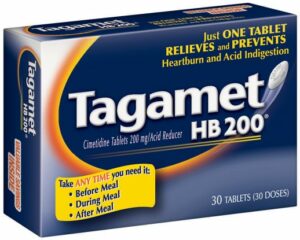Confused by hair transplant terms? Don’t be. When reading about hair transplants, it is not unusual to have never heard of some of the terms used. Below is a quick guide to medical hair transplant terminology so that you’ll know what the article you are reading is talking bout!
| Term | Definition |
|---|---|
| Compression | Can occur when putting grafts into slits when the existing tissue ‘compresses’ the follicle, which can cause poor growth and/or improper direction of the hair. |
| Donor Area | The area at the very back of the scalp which usually does not bald where hairs can be removed for the purpose of transplanting elsewhere on the scalp. |
| Free Flap | A type of scalp flap surgery where one or more large flaps of hair-bearing scalp is detached and used to form a new hairline and replace hairloss where the scalp has been reduced. |
| Follicular Units | Follicular units are the natural bundles of hairs (from 1 to 5) that grow out of the scalp. Often, one or more hairs grow out of the same spot and share some of the same anatomy underneath the skin (such as sebaceous glands). Many doctors consider follicular units superior since they preserve the follicles as they are present in the scalp before transplantation. |
| Follicular Unit Extraction (FUE) | A method of removing follicular units from the “Donor Area” where the follicular units are individually removed instead of being removed in one long strip. The method heals the quickest, is less painful with less complications, and has minimal or no scarring. Currently it costs more than the standard strip method. |
| Full Graft (“Plugs”) | The first type of graft performed, these consist of 10-20 hairs in a circular 4-5mm graft. They are responsible for the ‘cornrow’ dollhead look of older transplants when finer grafts were not used to soften and fill in hairlines. |
| Graft | A bundle of hairs that has been removed from the donor area of the scalp for transplant into the recipient zone. |
| Line Graft | A large graft similar to a full graft but in a line rather than a circular graft. The line graft is used to provide density behind the hair line with a more natural look which is softened by other smaller grafts for a natural look. |
| Median Reduction | This is a type of scalp reduction in which the scalp is reduced in an oval shape at the center of the bald area of scalp. |
| Megasession | This term describes a transplant operation in which a large number of grafts (1000-3000, usually mini and micrografts) is performed in one operation. Proponents of the operation say it prevents multiple operations while still providing good results. Opponents say it may put too much stress on the blood supply and cause a low yield of hairs growing back. |
| Micrograft | One or two fine hairs used in transplants to ‘soften’ the front hairline to give it a natural appearance. |
| Minigraft | Two to Six thicker hairs used to ‘soften’ and fill in hairline transplants and provide density with a natural look. |
| PÂTÉ | Prolonged Acute Tissue Expansion. A scalp expansion procedure that is done during an operation rather than before or after by inflating and deflating a scalp extension balloon many times over several hours to stretch the available scalp. |
| Paramedian Reduction | An ovular scalp reduction away from the center of the balding scalp. |
| Random Flap | A flap which isn’t tied to a particular blood supply. Typically used to correct remaining bald areas after remaining after procedures such as a scalp extensions. |
| Scalp Expansion | A scalp reduction surgery in which balloons implanted below the scalp expand hair-bearing areas which are used to cover the reduced scalp area. |
| Scalp Extension | A scalp reduction surgery in which a hooked medical device applies force to the scalp and stretch the hair-bearing areas to allow them to cover the reduced section of the scalp. |
| Scalp Flap | A scalp reduction surgery in which surgically removed flaps of hair bearing skin are used to cover reduced areas of the scalp and hair line. There are different methods of scalp flap surgery. |
| Scalp Lift | A scalp reduction surgery which allows a larger reduction (about twice as much reduced area) to be performed without flaps or extension. |
| Scalp Reduction | The simplest scalp reduction surgery is one in which small areas of balding scalp are removed in a succession of several small surgeries to reduce the area of balding scalp so that better results can be gained from transplantation. |
| Slot Correction | A random flap procedure developed by Patrick Frechet to correct remaining bald areas left over from procedures such as scalp extensions or median scalp reductions. |
| Slot Punch | The slot punch is a recent development which is supposed to allow results similar to lasers and prevent compression. |
| Slit Graft | A graft inserted into a slit in the scalp rather than a circular hole. Some doctors perform this more commonly for a variety of issues such as healing, appearance, etc. |
| Transsection | Occurs during harvesting of the donor hair or dissection of the grafts when follicles are accidentally cut by the blade, resulting in a loss of the hair, typically anywhere from 3-20% depending on technique. It is currently being debated how important this is since the latest cloning information shows most follicles should regenerate even if transsected. |
| Transpositional Flap | Commonly known as a flap rotation, this surgery takes strips of surgically removed hair bearing scalp and uses them to form a new hairline and/or cover reduced balding areas of the scalp. |





